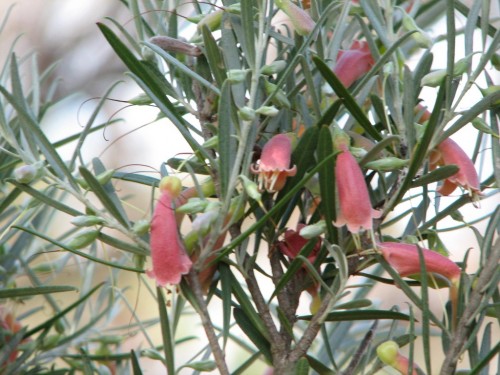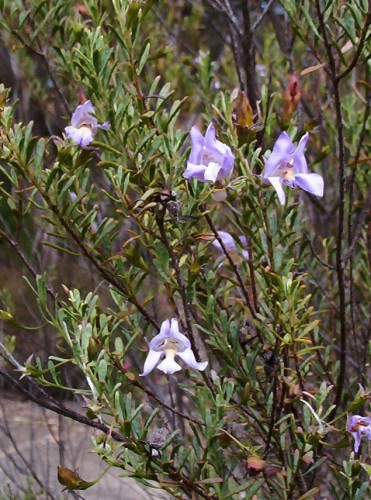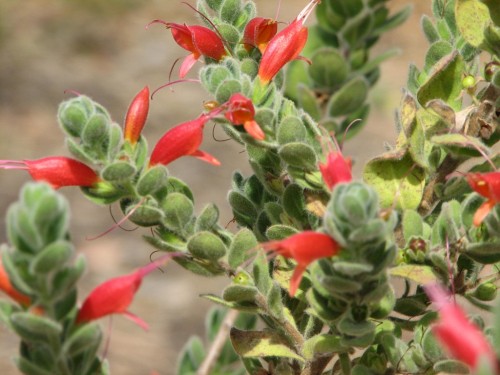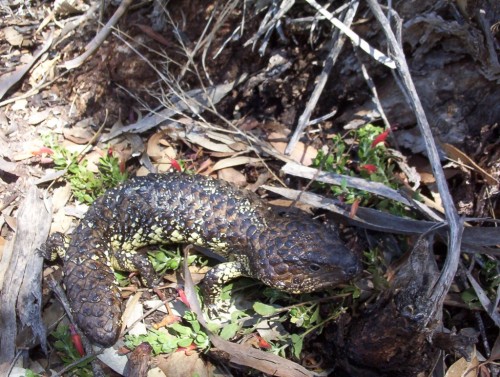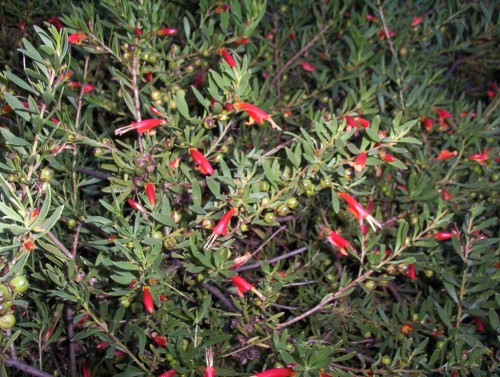Drought Proofing Our Gardens 1
How do we drought proof our gardens? How do we manage the plants we have so that they can remain reasonable looking in a time where water restrictions make it difficult?
There are some actions that I want to take over these next few weeks with my own plants.
Rescuing Eremophilas
Plants that have been there for many years went today. We attempted to move a dozen of them by chopping the tops back hard and getting them into the ground again quickly. I have been using the chopped material to take cuttings. The trouble is that some of these have the reputation for being difficult to strike. That is why they were planted there in the first place. It was an attempt to conserve the plants at a time when it was not popular and arboretums were only just beginning to be seen as a place to conserve plants.
The photo is of an Eremophila (emu bush) which has probably gone now. No one seemed to know for sure whether it would be in the way or not. I am not sure of the name of this species. Some homework for me.
Planting More Eremophilas (Emu Bushes)
More plants found a spot in the ground today. Eremophilas seem to be the best option at the moment. Those I planted were Eremophila splendens, Eremophila ionantha, a very prostrate form of Eremophila glabra with deep red flowers, Eremophila debilis, a yellow form of Eremophila hillii, Eremophila glabra ssp. carnosa, Eremophila denticulata, Eremophila polyclada and Eremophila calorhabdos.
I was very aware of how ‘non wetting’ are some of the spots in the front yard. I’ve been told that potting mixes which have been wet very well will, on drying out, become water repellant. I am sure that must also happen to soil. So the next job needs to be treating the ground with a soil wetting agent and doing the same to the potted plants. With water at a premium this year, every drop needs to be accounted for.
More Information On Growing Eremophilas
Eremophila glabra prostrate, red form
I was watching the birds in the bird bath and spotted this small Stumpy tail Lizard (Shingle Back Lizard). It was munching on the red flowers of this very hardy ground cover Eremophila. It is not just red flowers that they like to eat. I have often seen them eating the yellow and orange flowers of Gazanias which have become naturalised around here. They also absolutely love to eat strawberries.
Eremophila flowers have a sweet nectar in the base of the flowers.
This particular plant is very hardy to frost and drought conditions as well as highly alkaline soil.
Planting Eremophilas
This afternoon I spent some time clearing out gazanias from around the dripper lines and digging holes to replace plants that did not survive a dry period we had a few years ago. I decided that I would put in more eremophilas (emu bushes). The area is very dry but is also the entrance to our place and needs cheering up. Some groundcover Eremophilas will be needed so that they can grow down a small embankment. This is one that I thought would be good as it has proved itself to be very hardy and is flowering prolifically at the moment much to the delight of the New Holland Honeyeaters.
There is a list of hardy eremophilas here.
